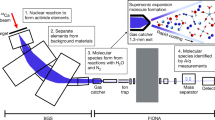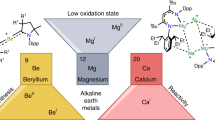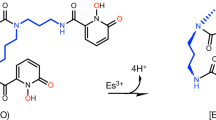Abstract
A MODERN table of chemical elements must show electronic configurations as well as the variation in the properties of the elements with atomic number. It should also include the lanthanide and actinide series of elements. The trend has been to lengthen the table (for example in the conventional long form and in Simmons' Table1) and so abolish the sub-group system. In the Table shown herewith the rectangular form has been preserved and a three sub-group system introduced.
This is a preview of subscription content, access via your institution
Access options
Subscribe to this journal
Receive 51 print issues and online access
$199.00 per year
only $3.90 per issue
Buy this article
- Purchase on SpringerLink
- Instant access to full article PDF
Prices may be subject to local taxes which are calculated during checkout
Similar content being viewed by others
References
Simmons, L. M., J. Chem. Educ., 24, 588 (1947) ; 25, 658 (1948).
Author information
Authors and Affiliations
Rights and permissions
About this article
Cite this article
CLIFFORD, A. Periodic Classification of Elements. Nature 184, 2012 (1959). https://doi.org/10.1038/1842012a0
Issue date:
DOI: https://doi.org/10.1038/1842012a0
This article is cited by
-
Periodic Classification of Elements
Nature (1960)
-
Periodic Classification of Elements
Nature (1960)
-
Periodic Classification of Elements
Nature (1960)



